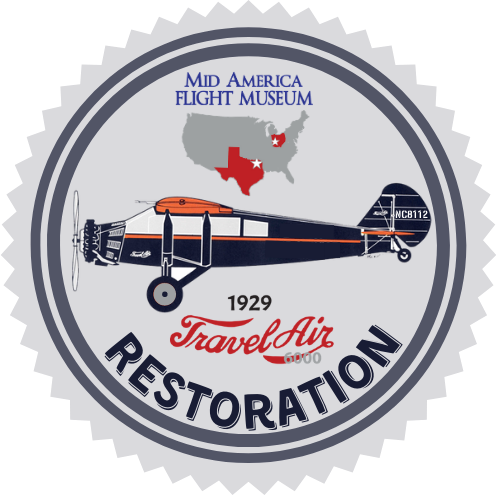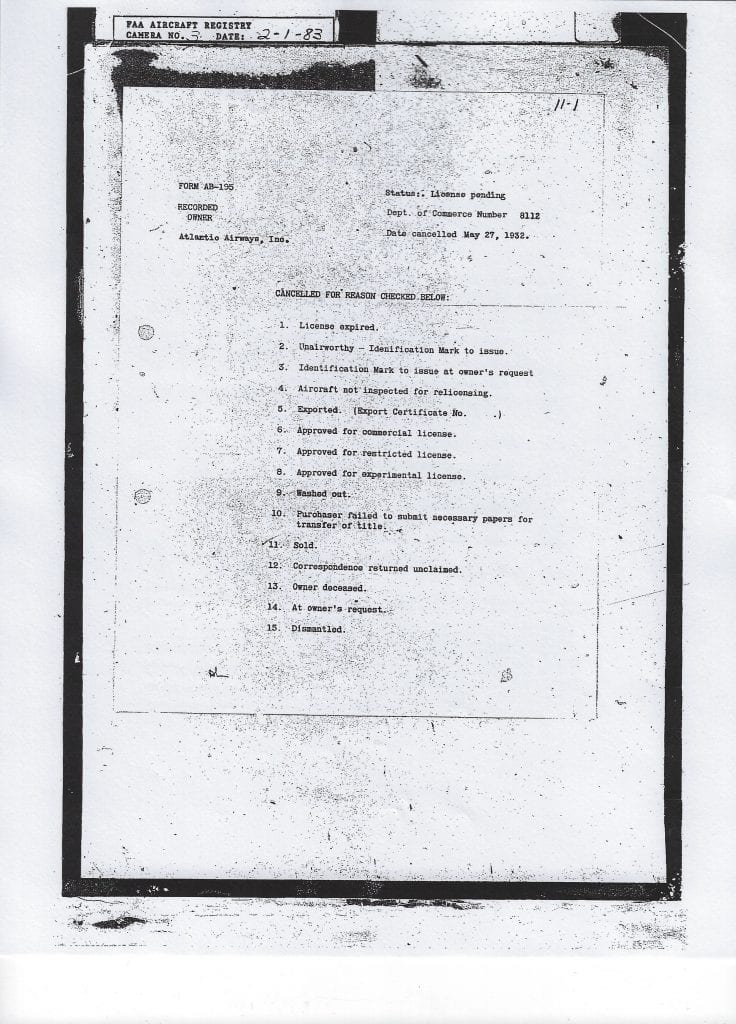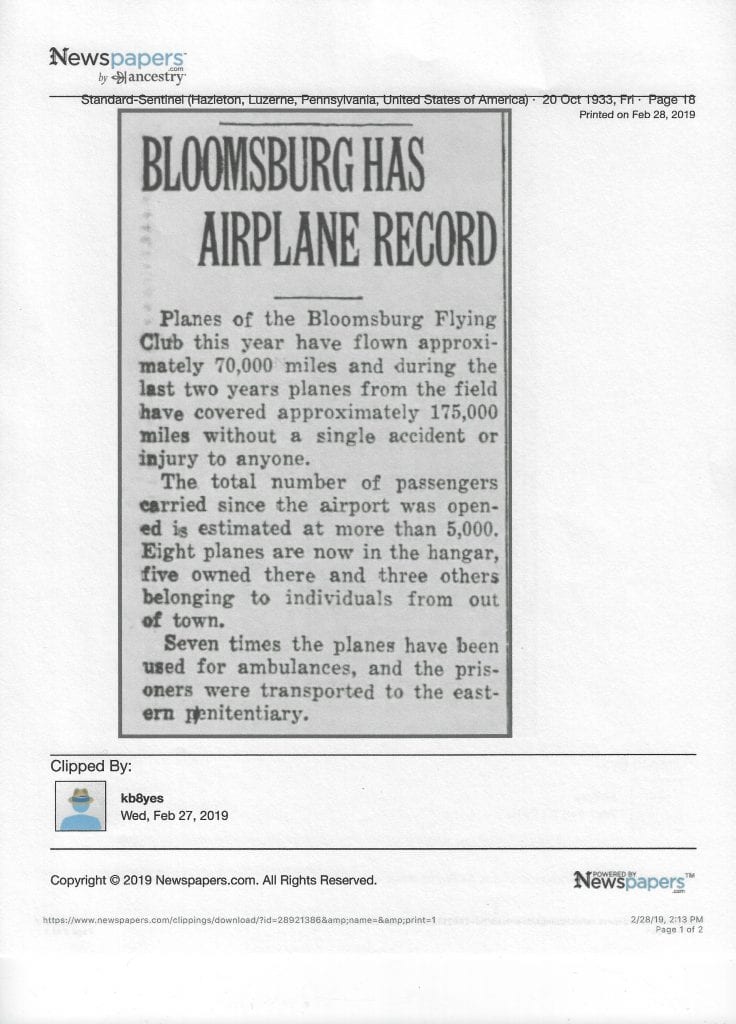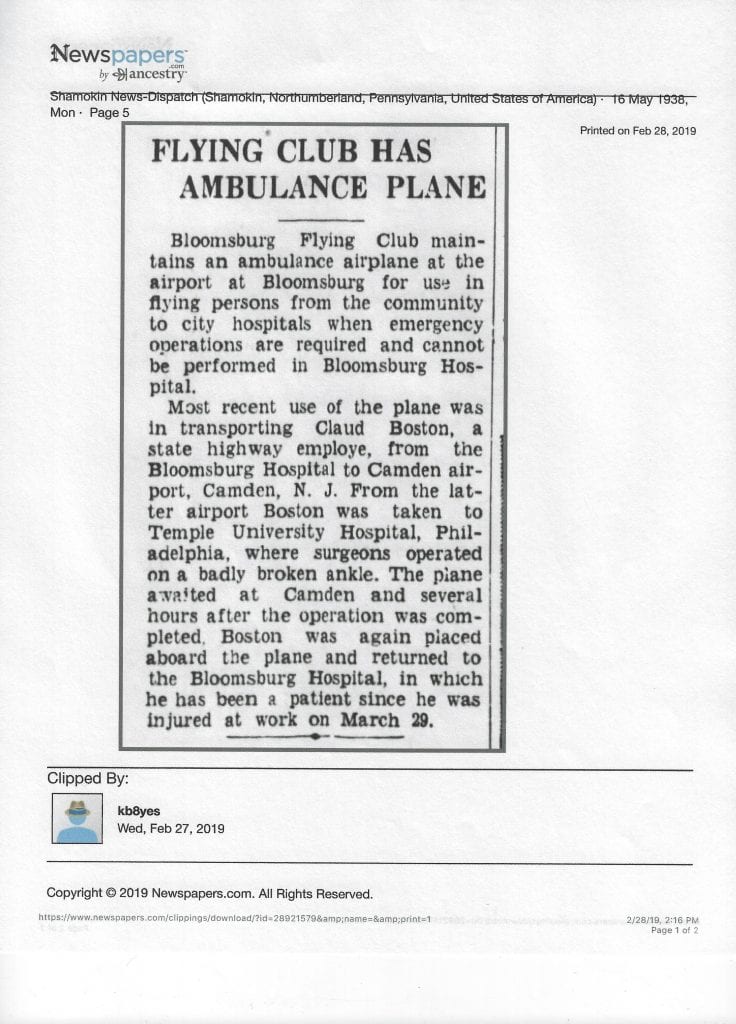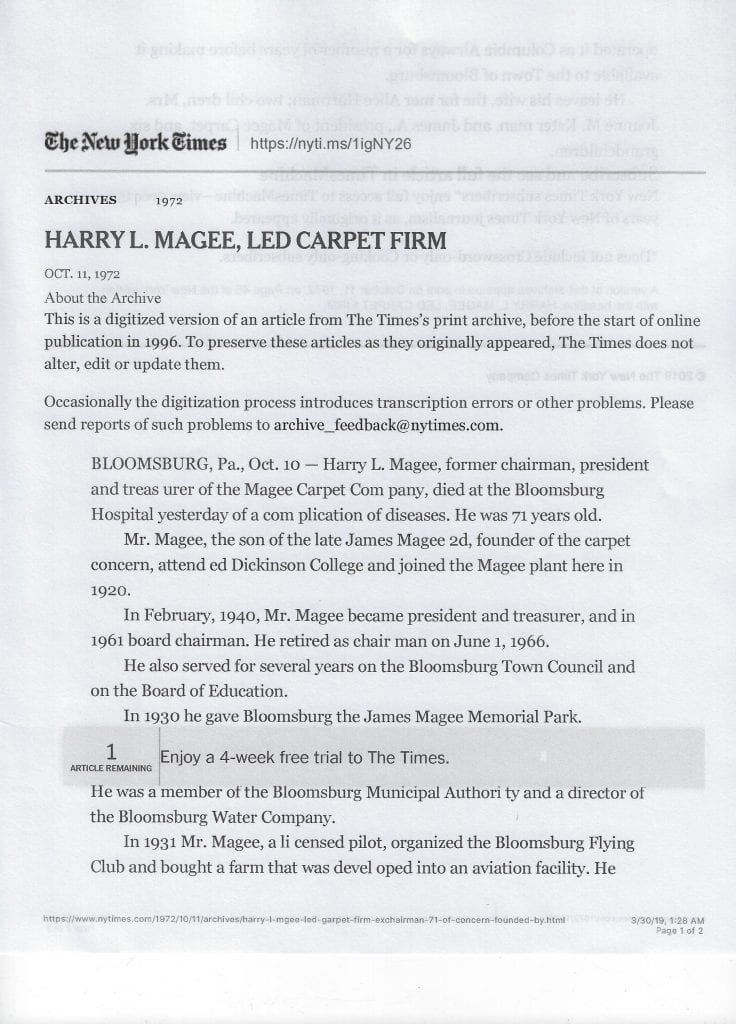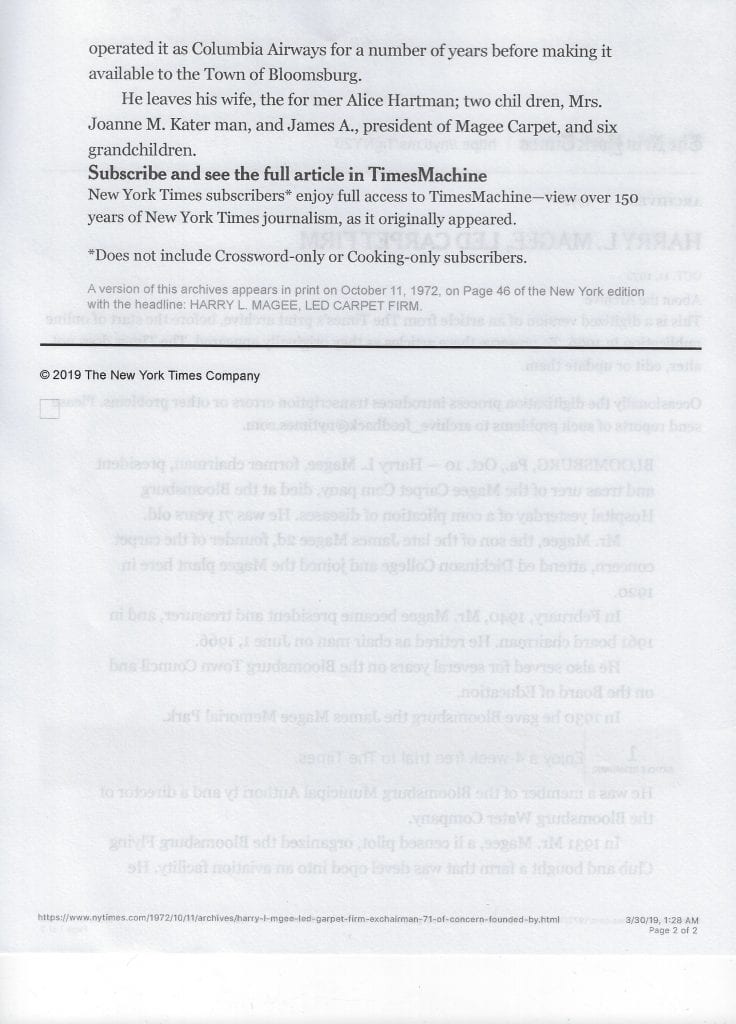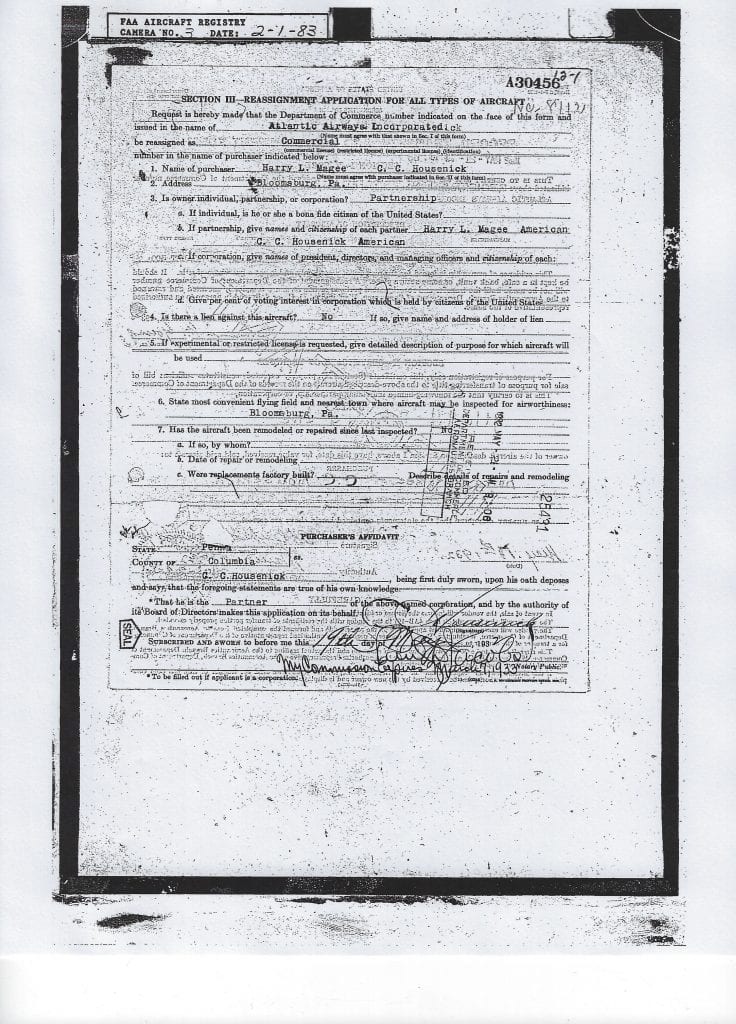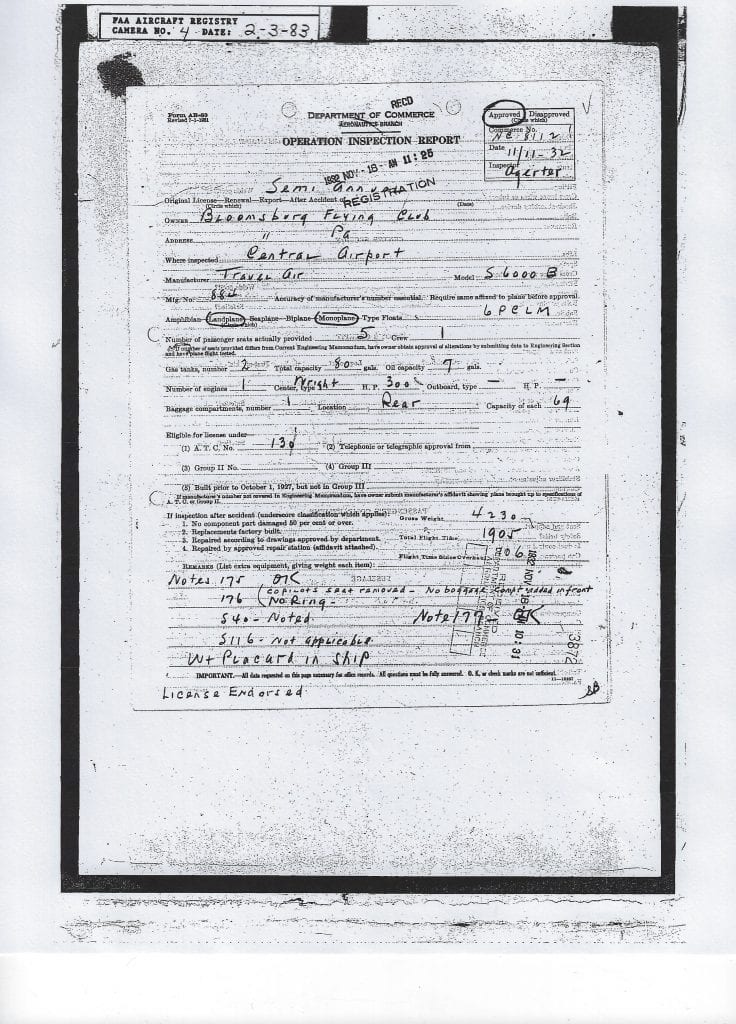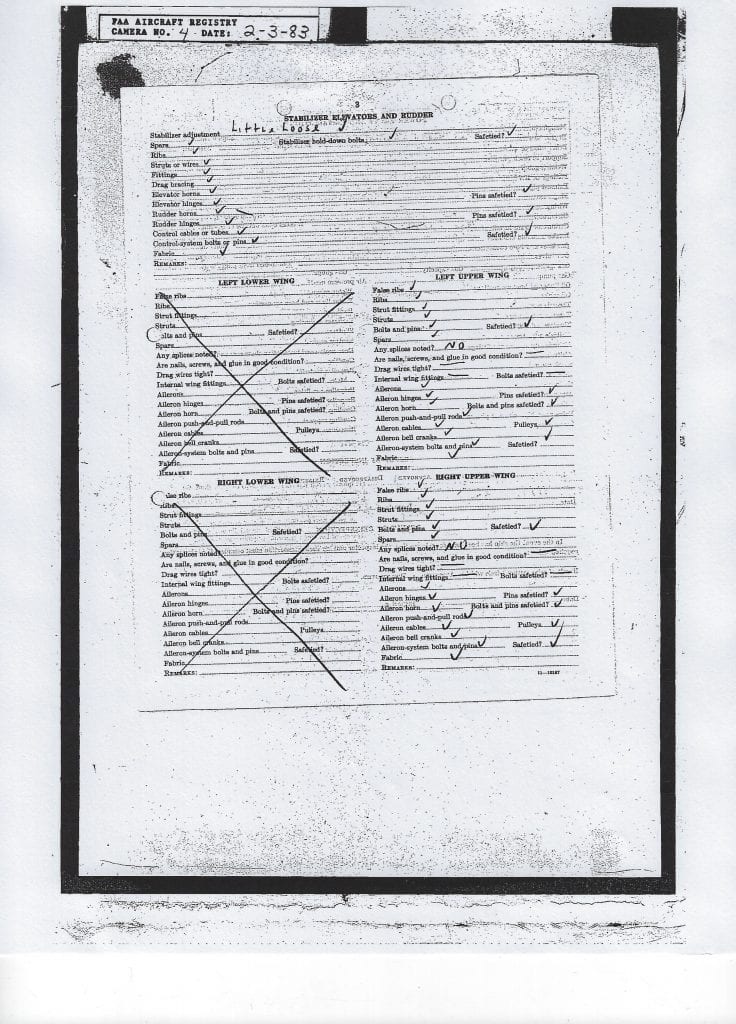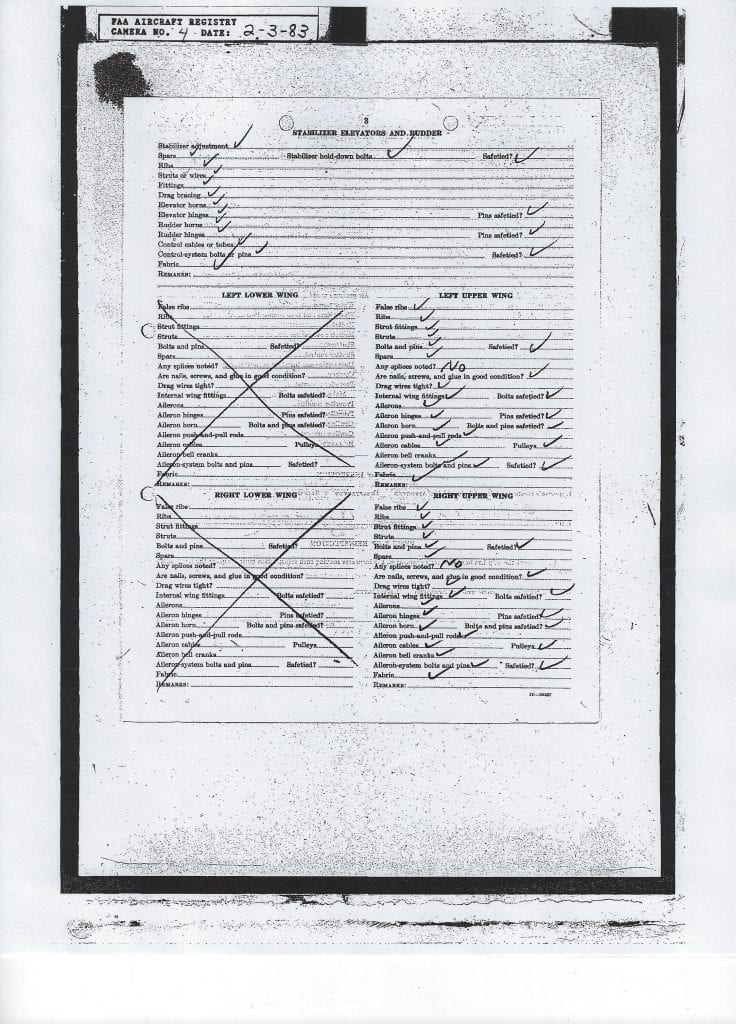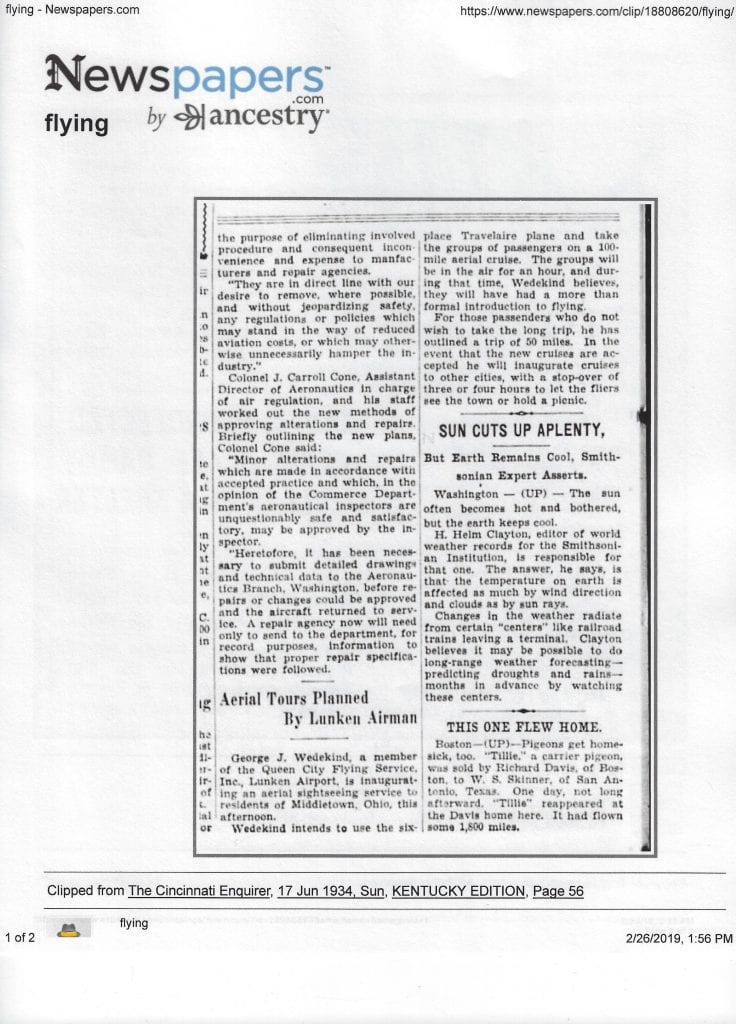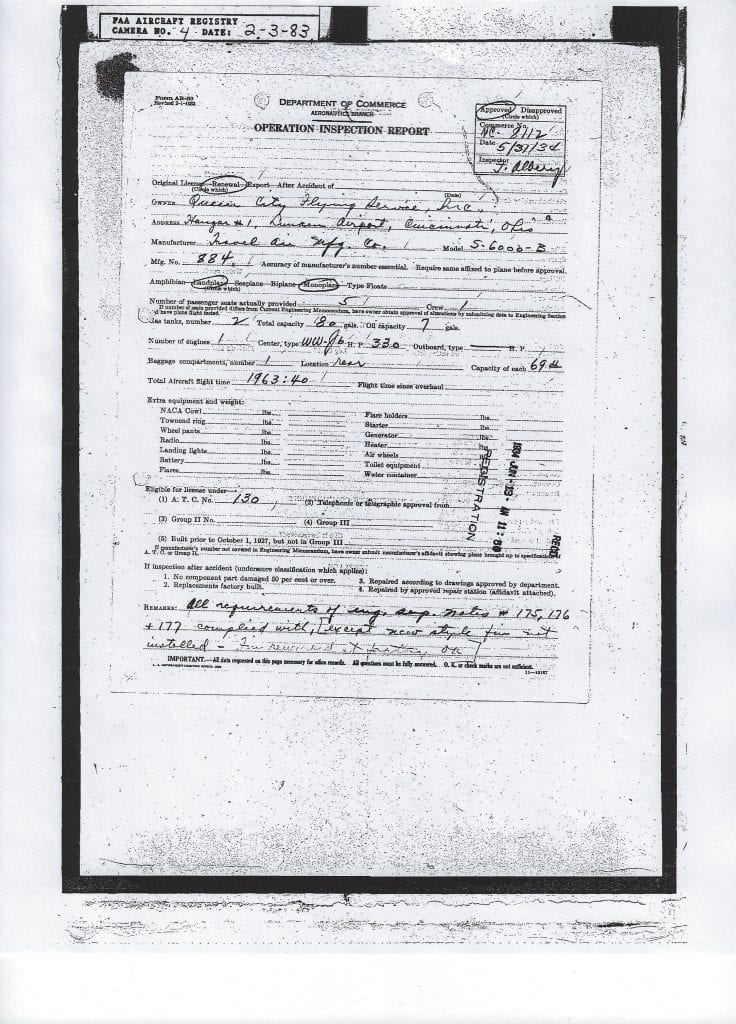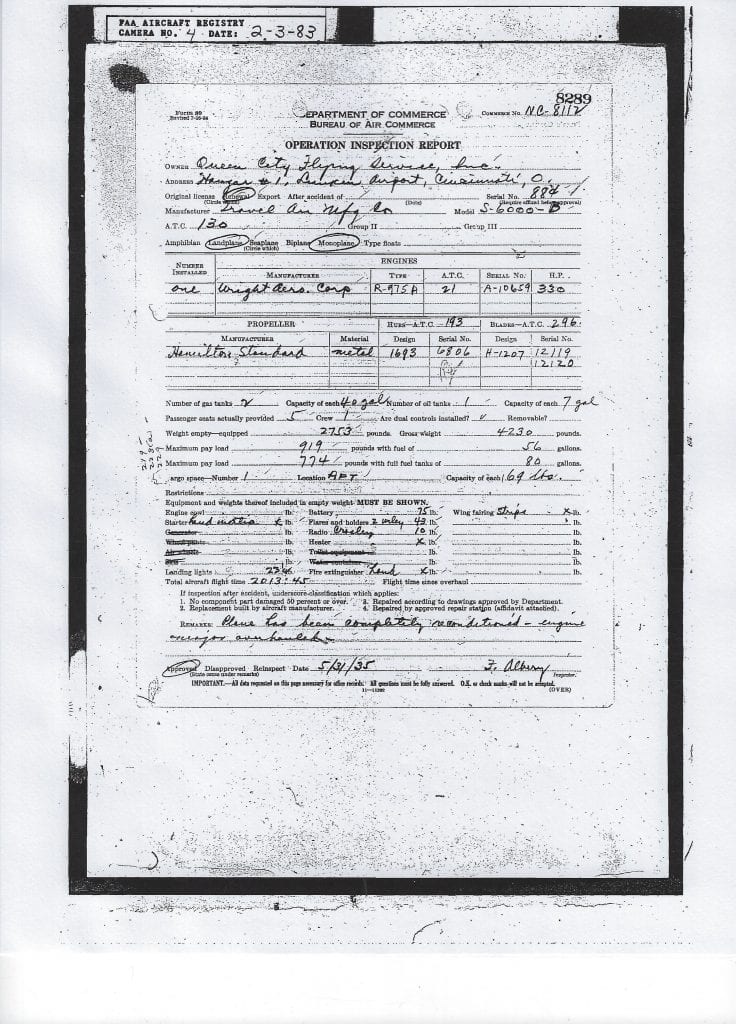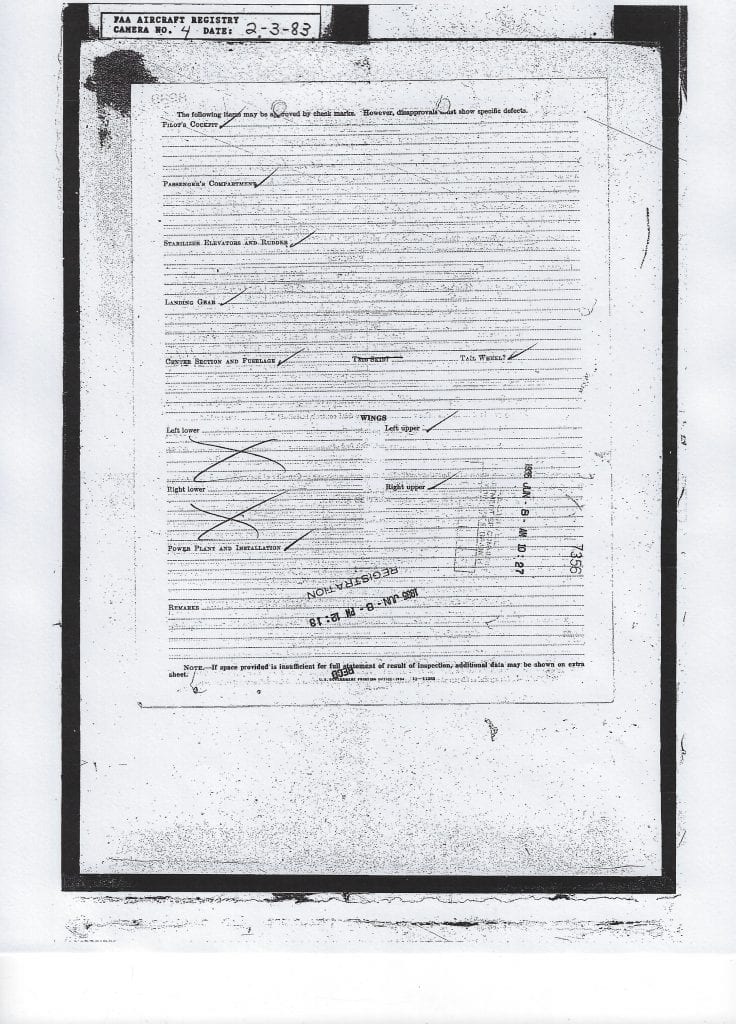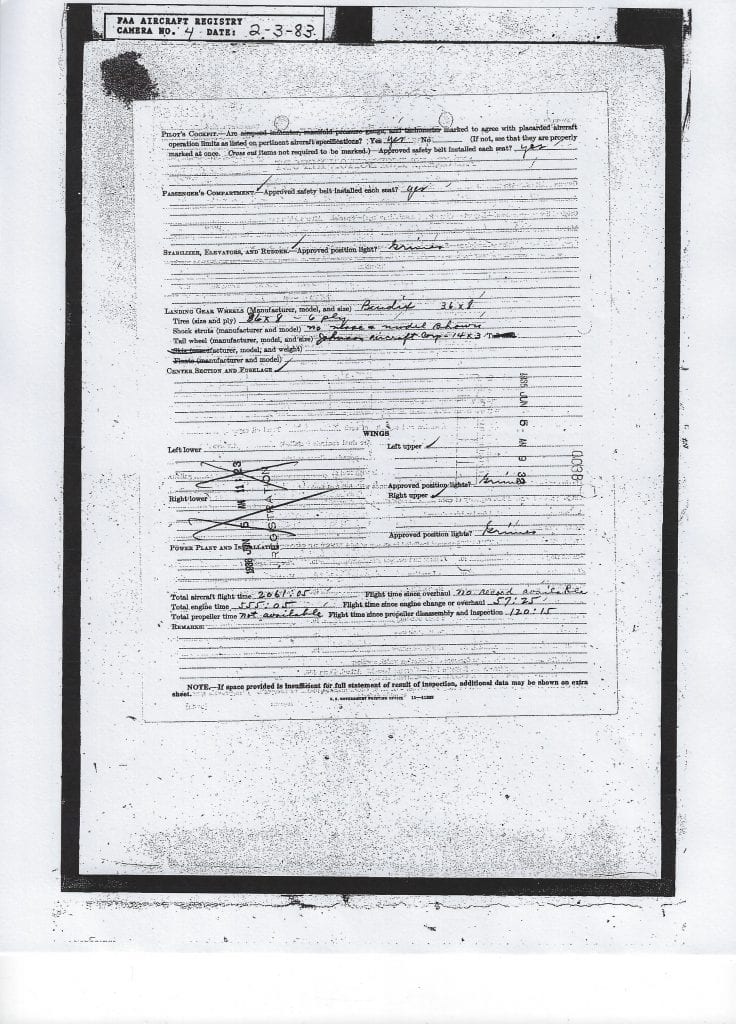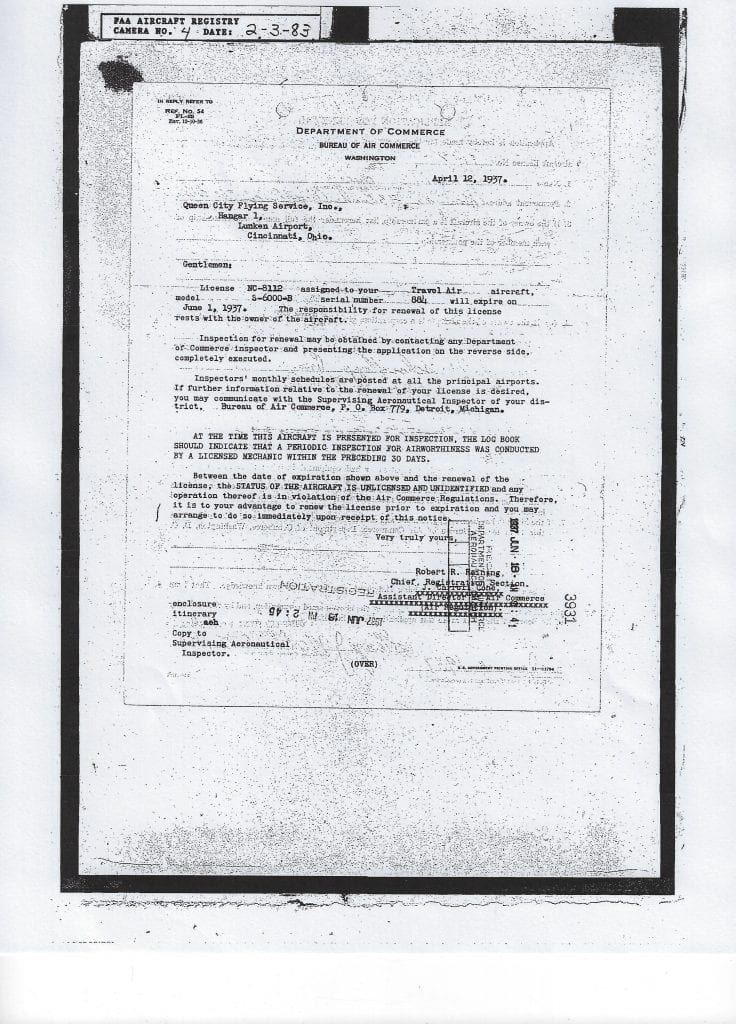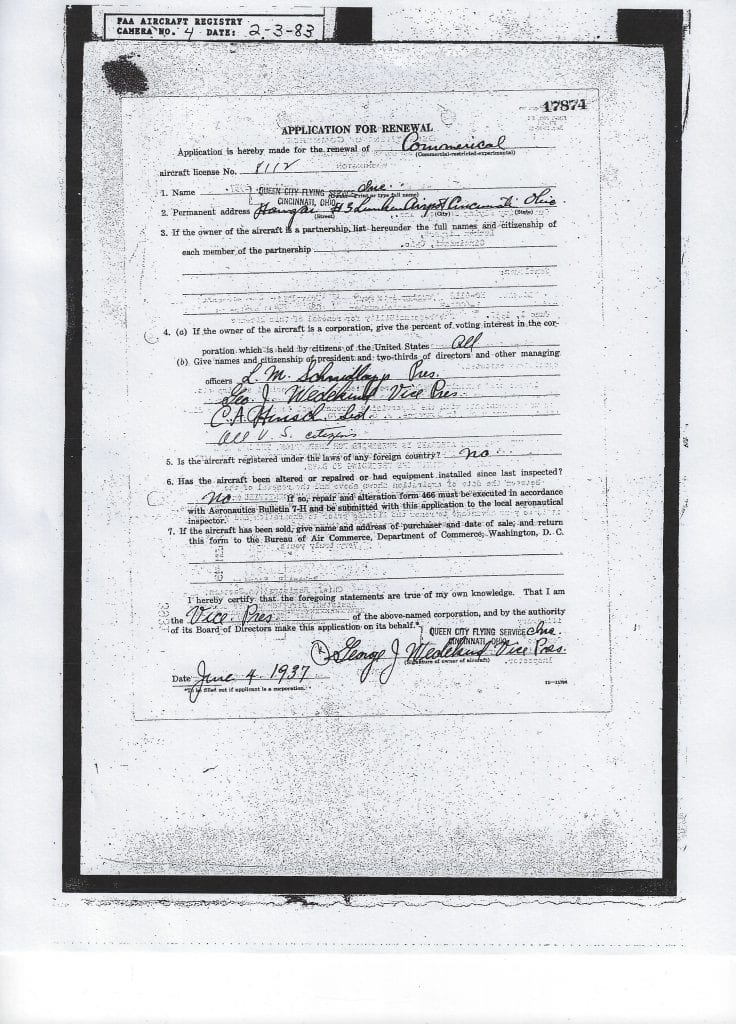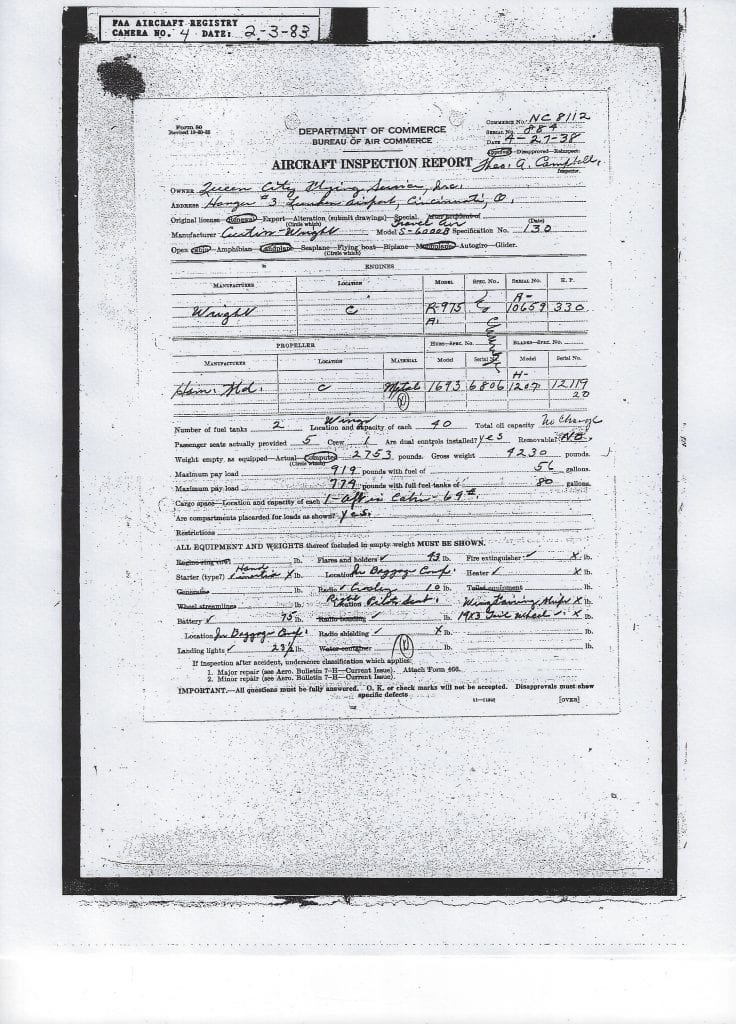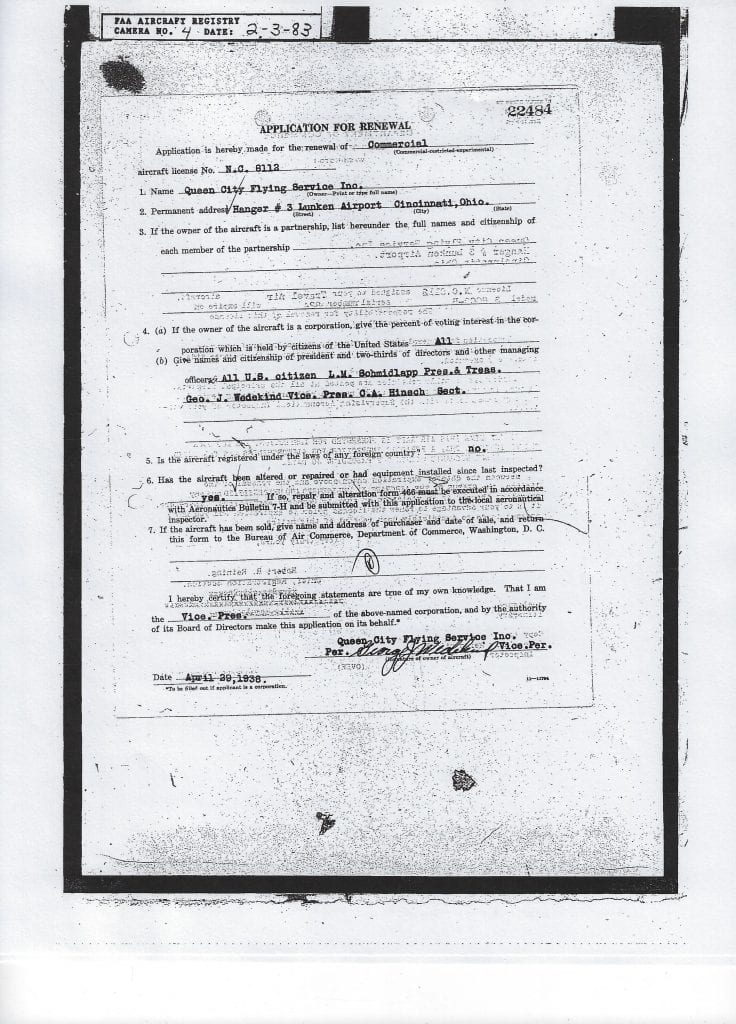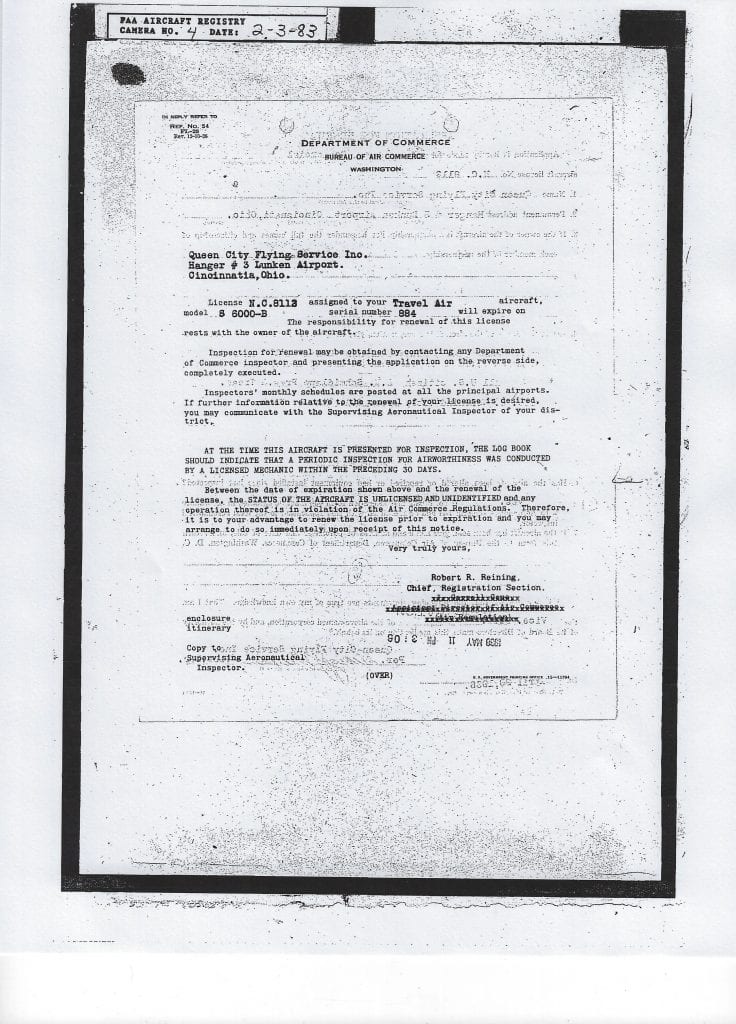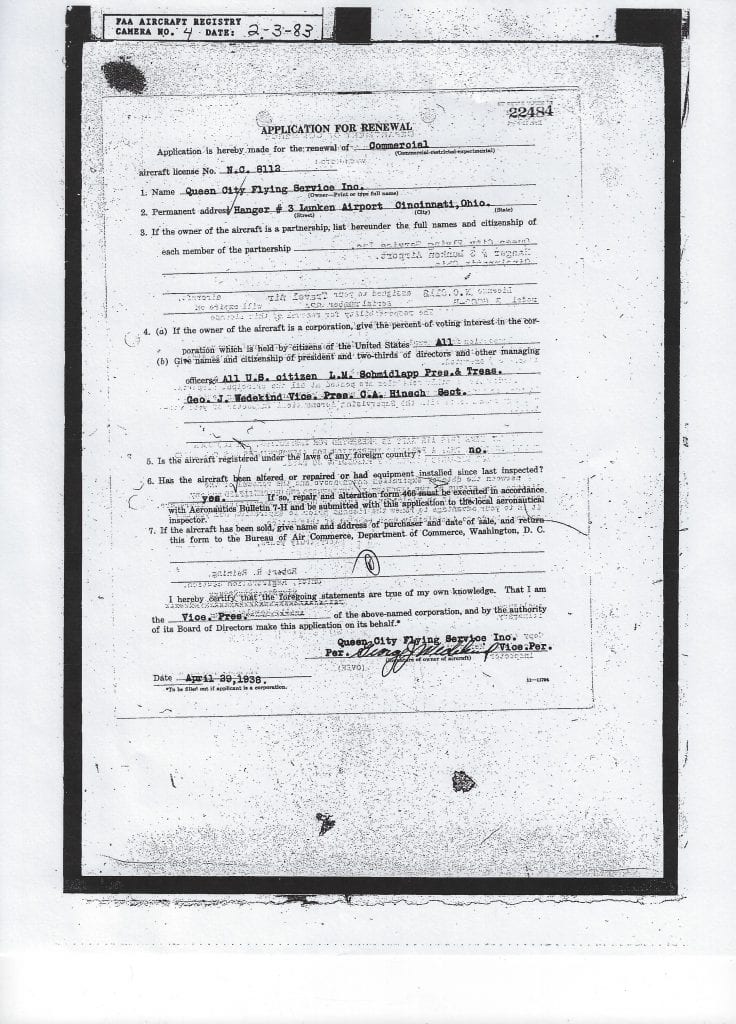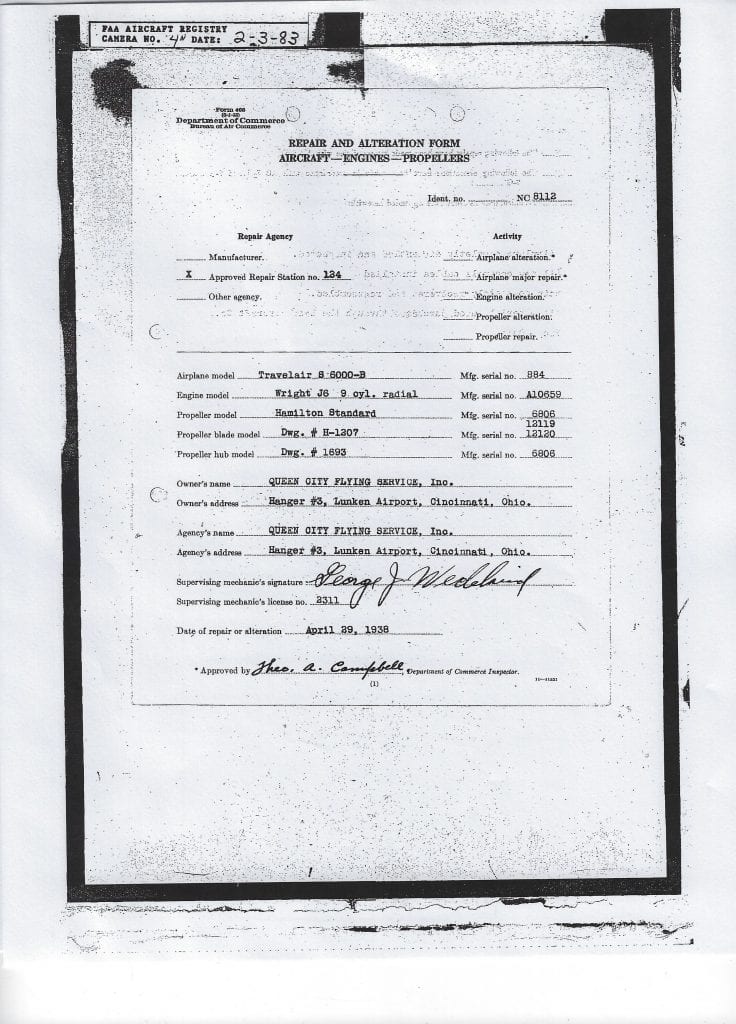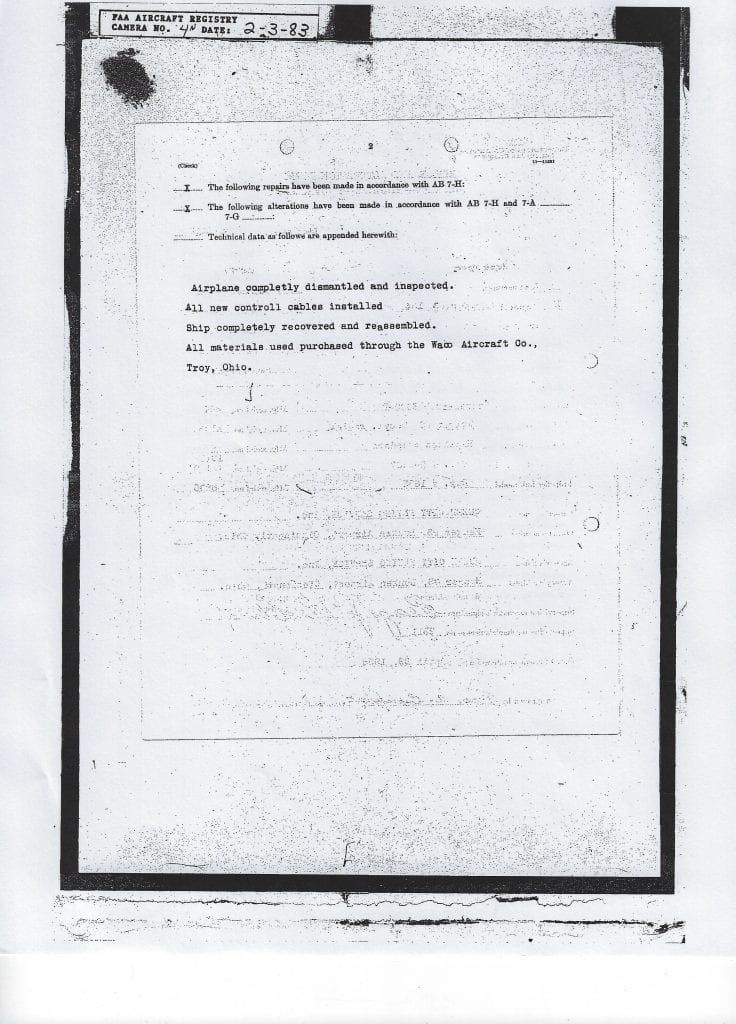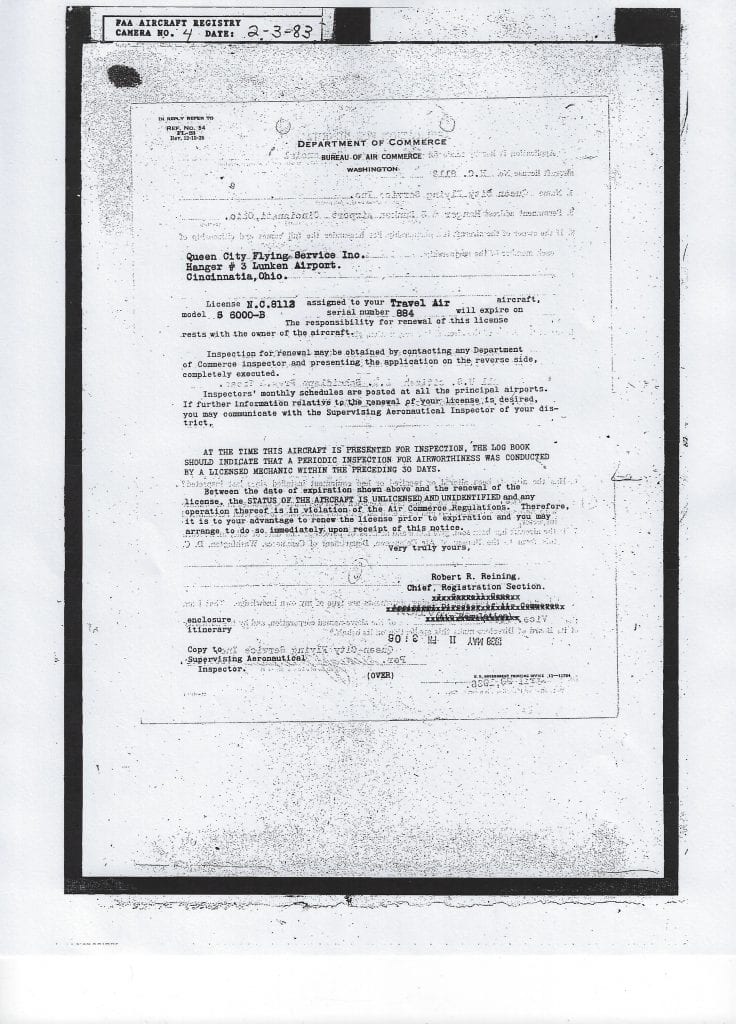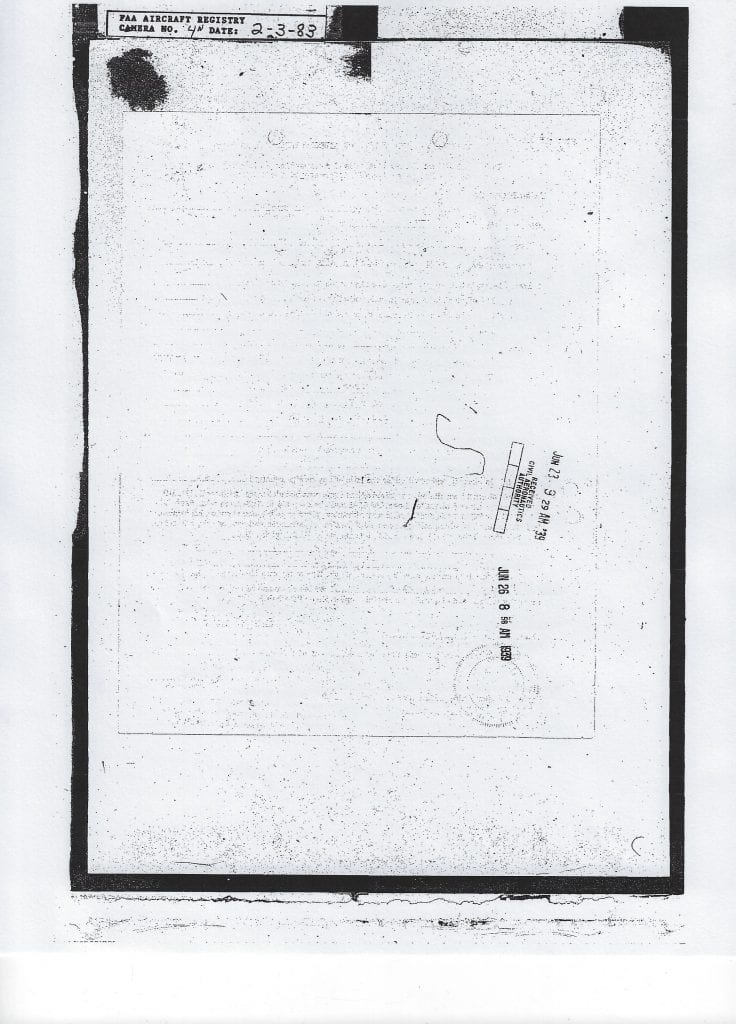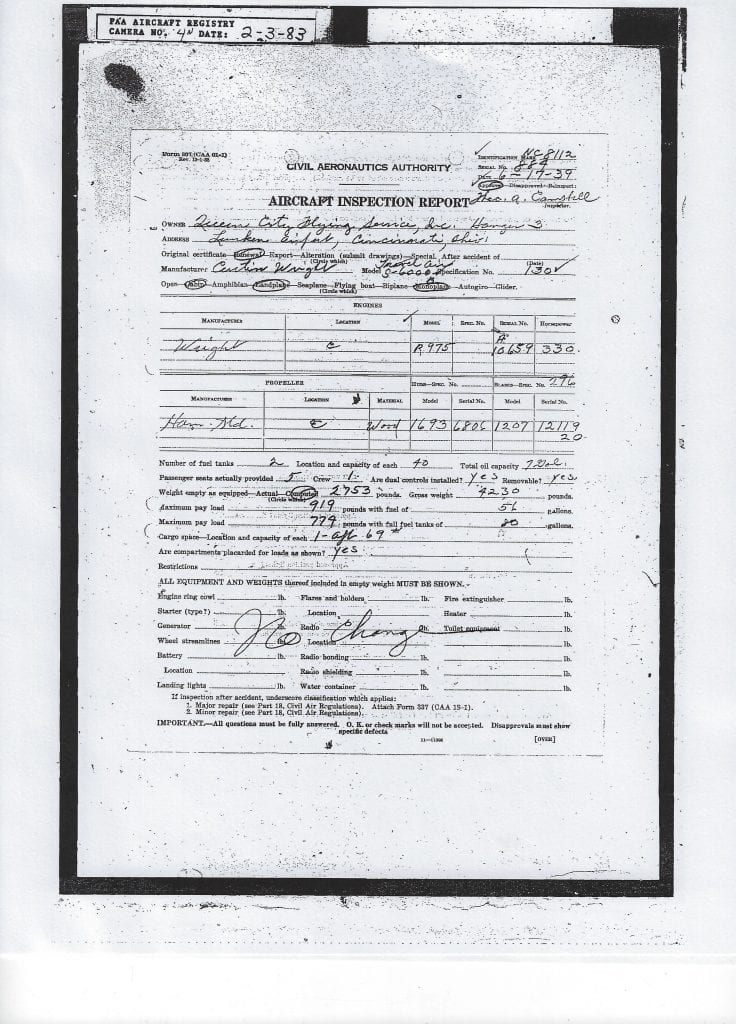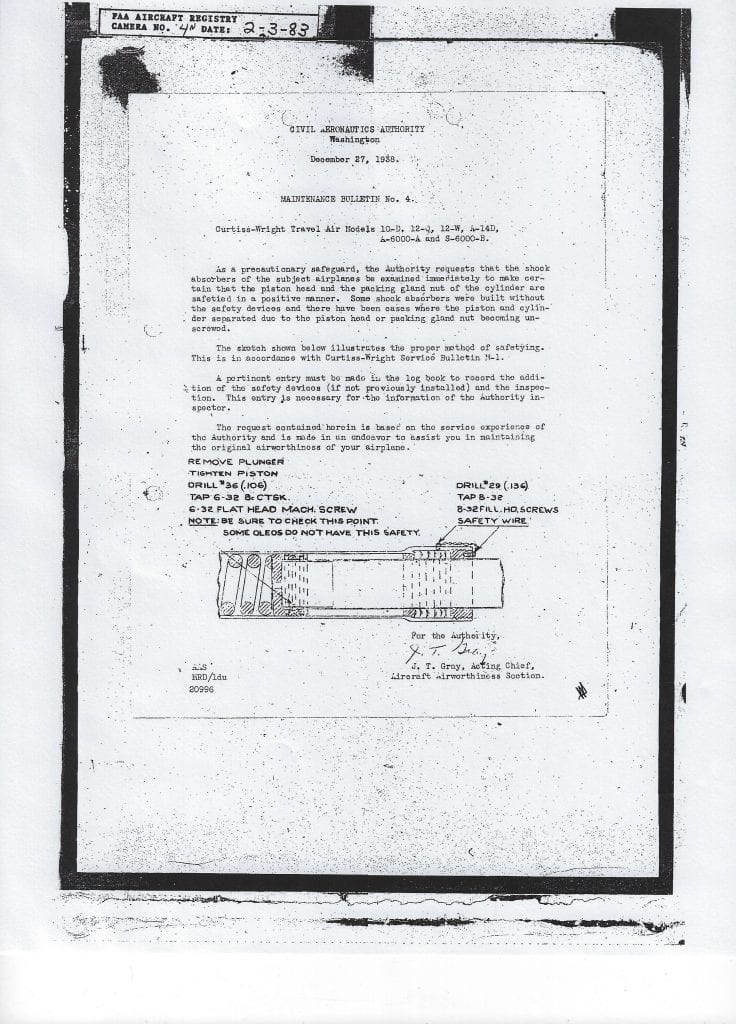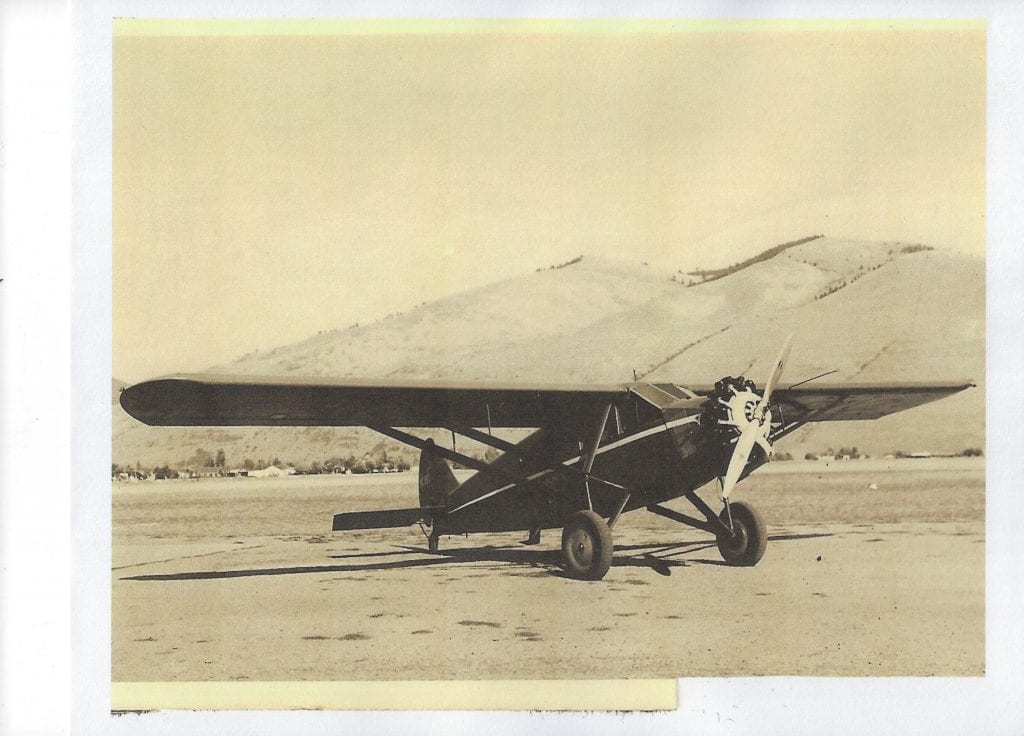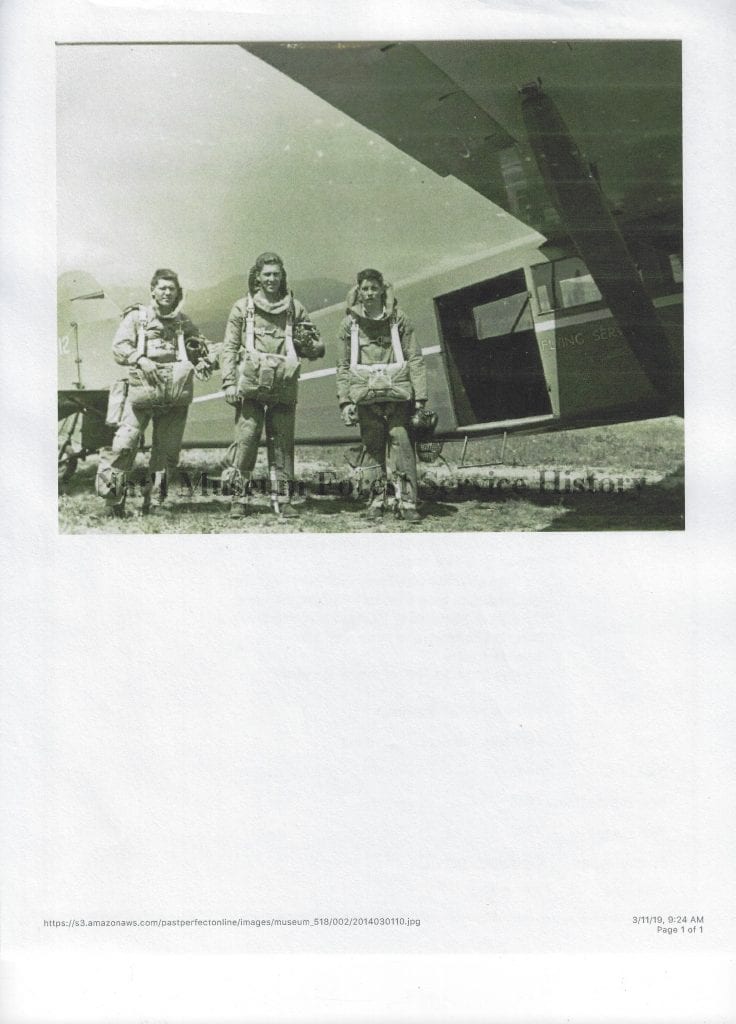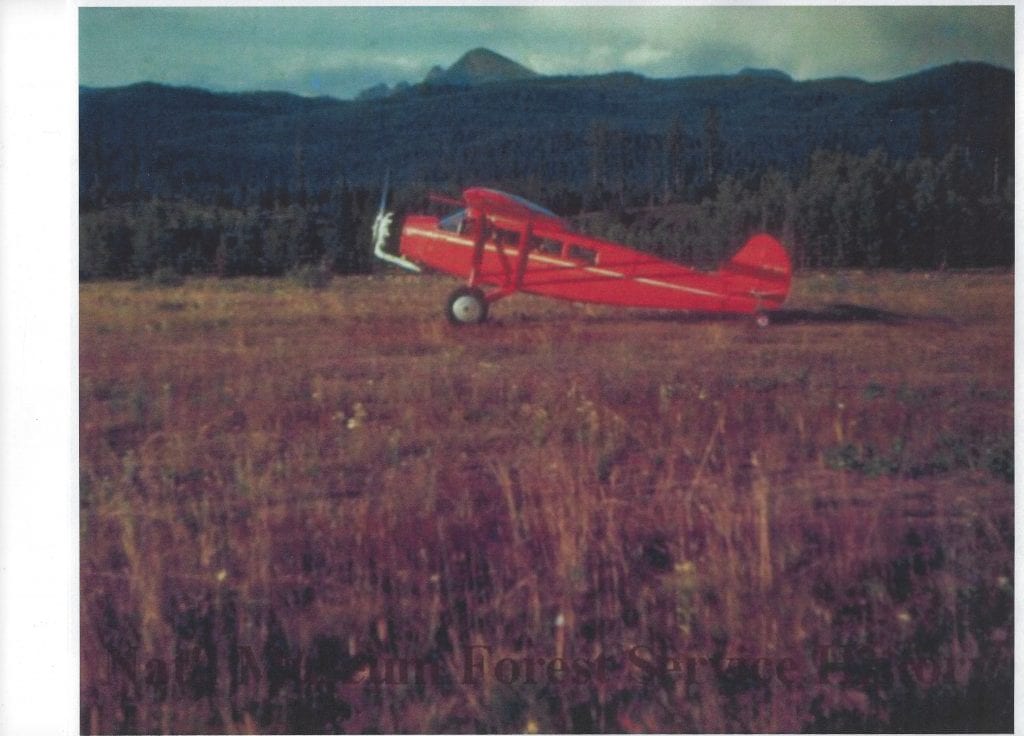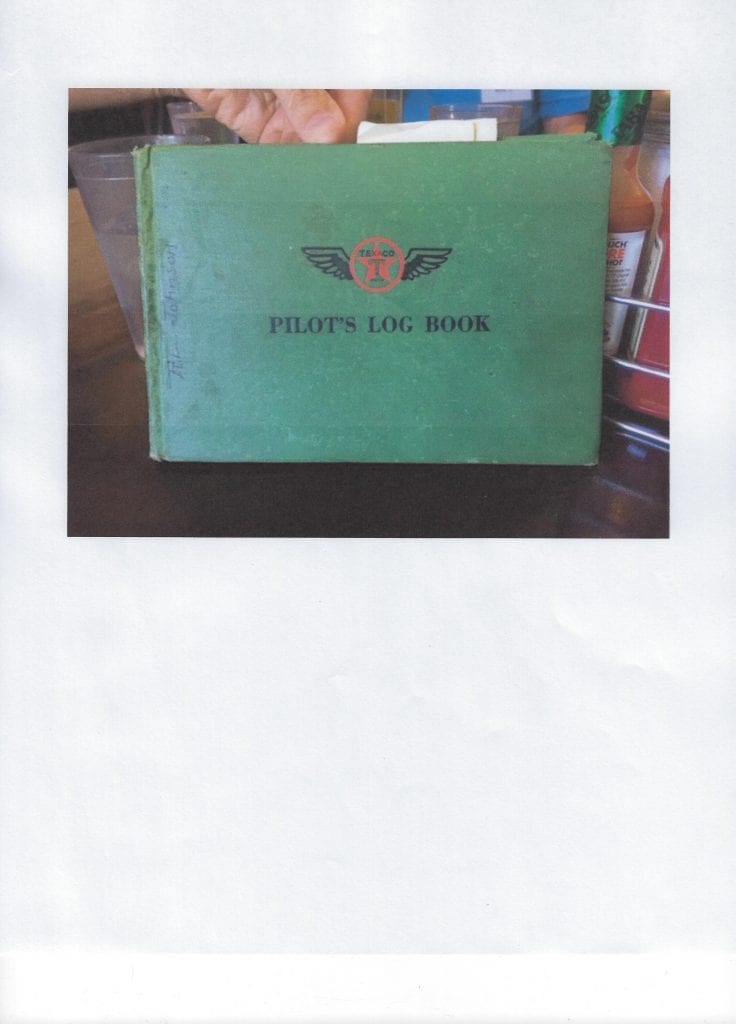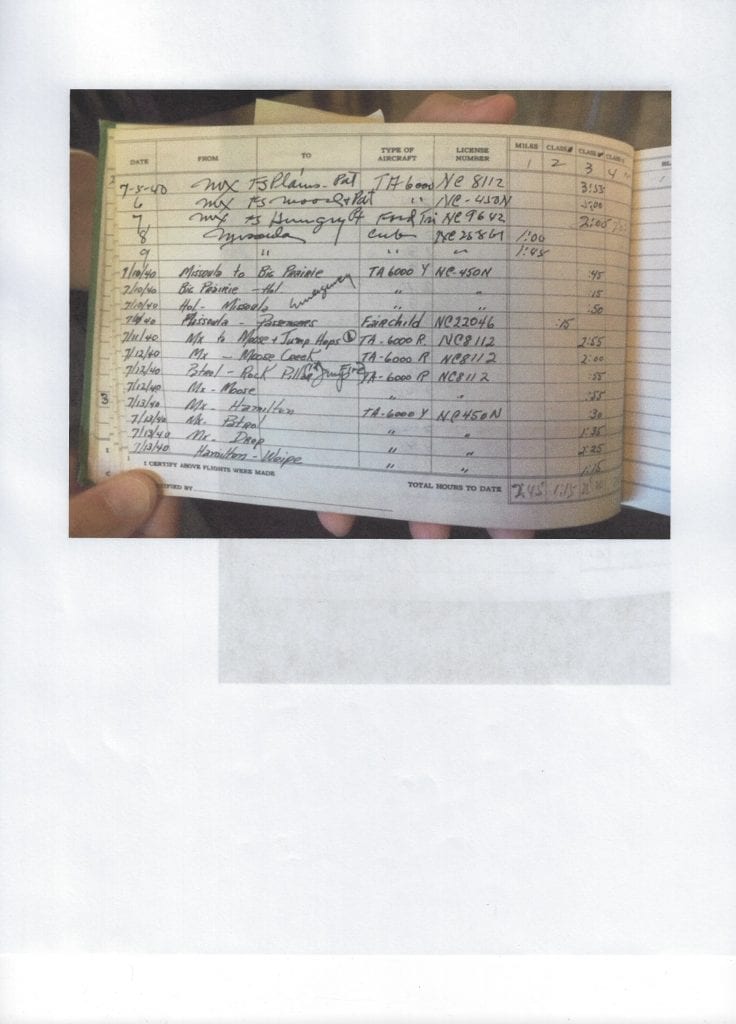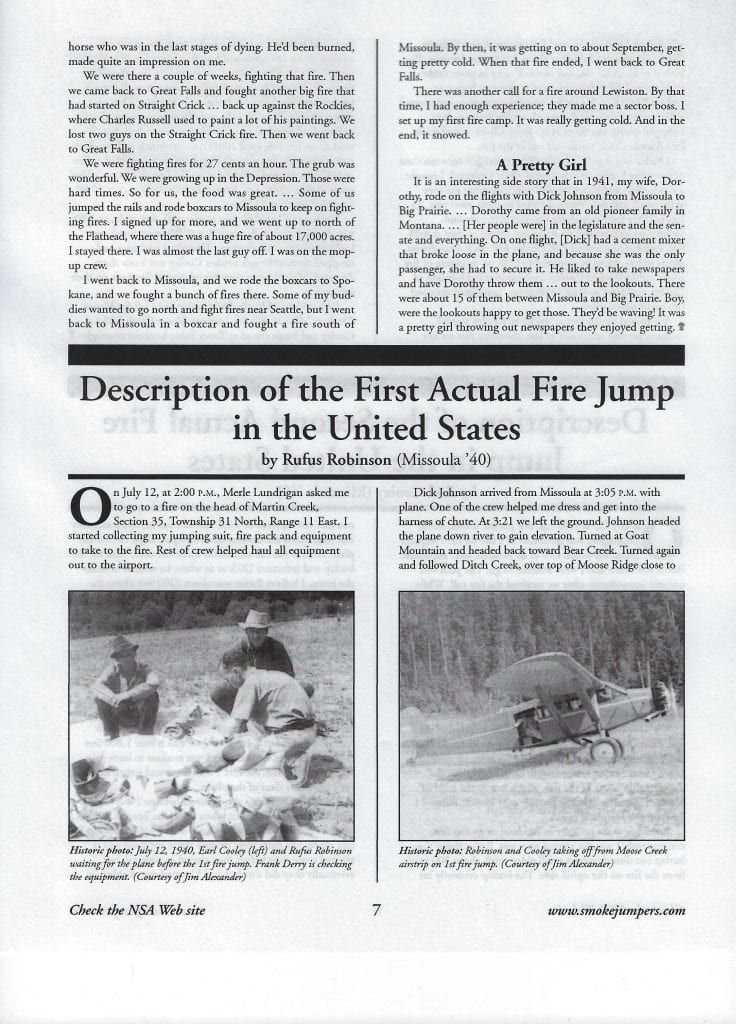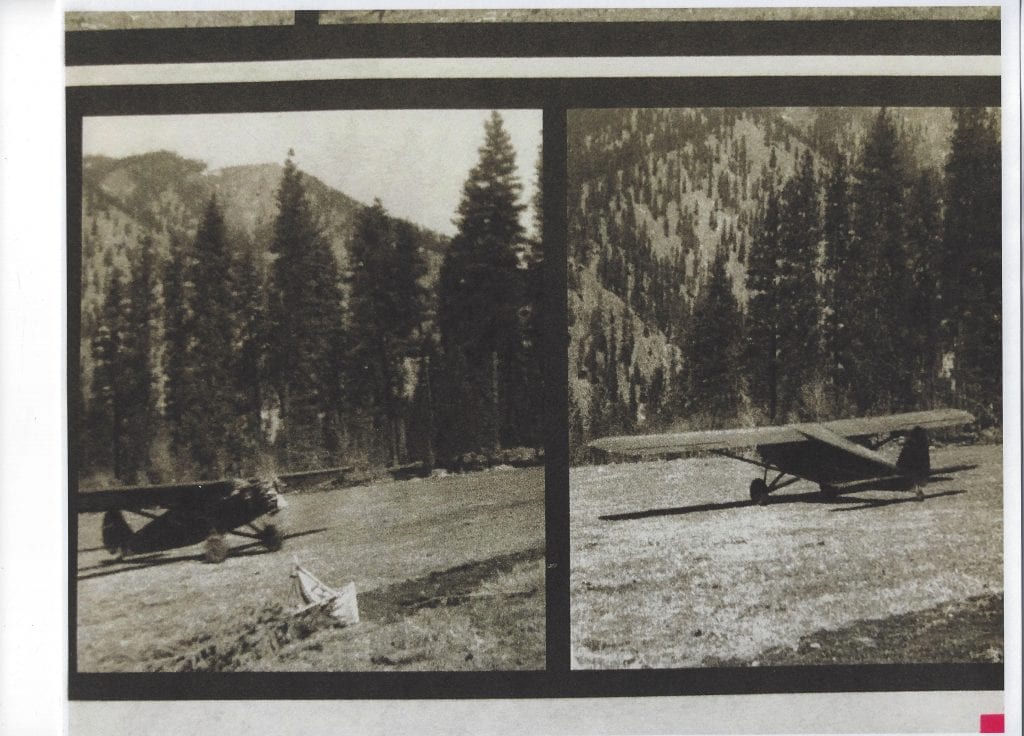History
March 1929 – March 2018
History

Sold Again – to a Flying Club
Since Atlantic Airways couldn’t make a go as an airline, NC8112 was sold to Mr. Harry L. MaGee and Mr. C. C. Housenick, both prominent business men, from Bloomsburg, PA. These gentlemen acquired the plane with the intension of also starting an airline but, realizing it was a lost cause, decided to form the Bloomsburg Flying Club instead. Mr. MaGee was one of the men responsible for building the Bloomsburg airport since he was truly enthralled with aviation.
Clubbing It
Mr. MaGee became the club president but we have no idea how many members were in the club. NC8112 was also used for air charter work.
A Bloomsburg Flying Club exists today but we cannot trace its linage back to the club of the 1930s.
A New Home
NC8112s next owner was Queen City Flying Service, doing business at Lunken Field, on the Southeast side of Cincinnati, OH. We have a picture of it in an newspaper article appearing in the Cincinnati Enquirer. The plane was primarily used for passenger charter, cargo charters, and banner towing. A lot of local site-seeing flights also took place.
Safety First
A maintenance bulletin was complied with to add safety wire to the main landing gear struts to prevent the gland nut from loosening.
A Facelift
The airplane was completely dismantled, inspected and recovered. All cables were replaced and the aircraft reassembled and relicensed. Materials were purchased from WACO in Troy Ohio. We have a newspaper article, from the Cincinnati Enquirer, answering the question of where the airplane disappeared to. The article continued to say that “Old Iron Bird”, as it was know, had moved on to a new owner. Queen City Flying Service had purchased newer and better aircraft enabling faster and more comfortable flights to more distant destinations.
Life as a Firefighter
Queen City Flying Service sold the plane to Johnson Flying Service in Missoula, MT and NC8112 was reregistered on this date. The airplane was used primarily to move Forest Service fire fighters and cargo to fight forest fires in the Montana and Idaho national forest service region 1. They utilized small remote airfields and sometime used parachutes for cargo drops. In addition, it also hauled supplies, passengers and mail to various small communities in Montana and Idaho mountainous areas. The plane was well suited for this type of flying being able to fly heavy loads into and out of rough short airfields high up in the mountains.
Smokejumpers
This aircraft made history when it was used to drop the very first smokejumpers, Earl Cooley and Rufus Robinson, on an actual forest fire near Martin Creek MT. NC8112 was flown by Dick Johnson, brother of Johnson Flying Service owner, Bob Johnson. We have pictures of Dick Johnson’s log book noting this historical event from Fred Cooper with the National Museum of Forest Service History. The log book is now retained by Dick Komberec of Missoula MT. Dick Johnson’s log book called the event the Rock Pillar fire on Martin Creek. The National Museum of Forest Service History provided us with a picture of the historic event as well as other pictures of NC8112. Incidentally, the person usually credited with conceiving the idea of Smokejumpers was T. V. Pearson of the Forest Service’s Intermountain Region, in Ogden Utah in 1934. They developed and test equipment and tactics over a six year period.
Accident #6
NC8112 was involved in an accident at Six Mile Field, near Hudson, MT, not far from the present day Missoula International Airport. The field was a temporary training field used only in 1941. Fred Cooper, with the National Forest Service History Museum, found the site where the Six Mile air field once existed and took several pictures for us.
Fix er Up
Accident repairs were completed and 337s forms provided to Civil Aviation Authority. Repairs consisted of:
- A new engine mount
- Repairs to longerons and landing gear
- A new axel was installed
- The right wing was replaced with a wing from Travel Air 6000 NC623H (Which had been salvaged from another accident)
- A different Hamilton Standard propeller was installed
